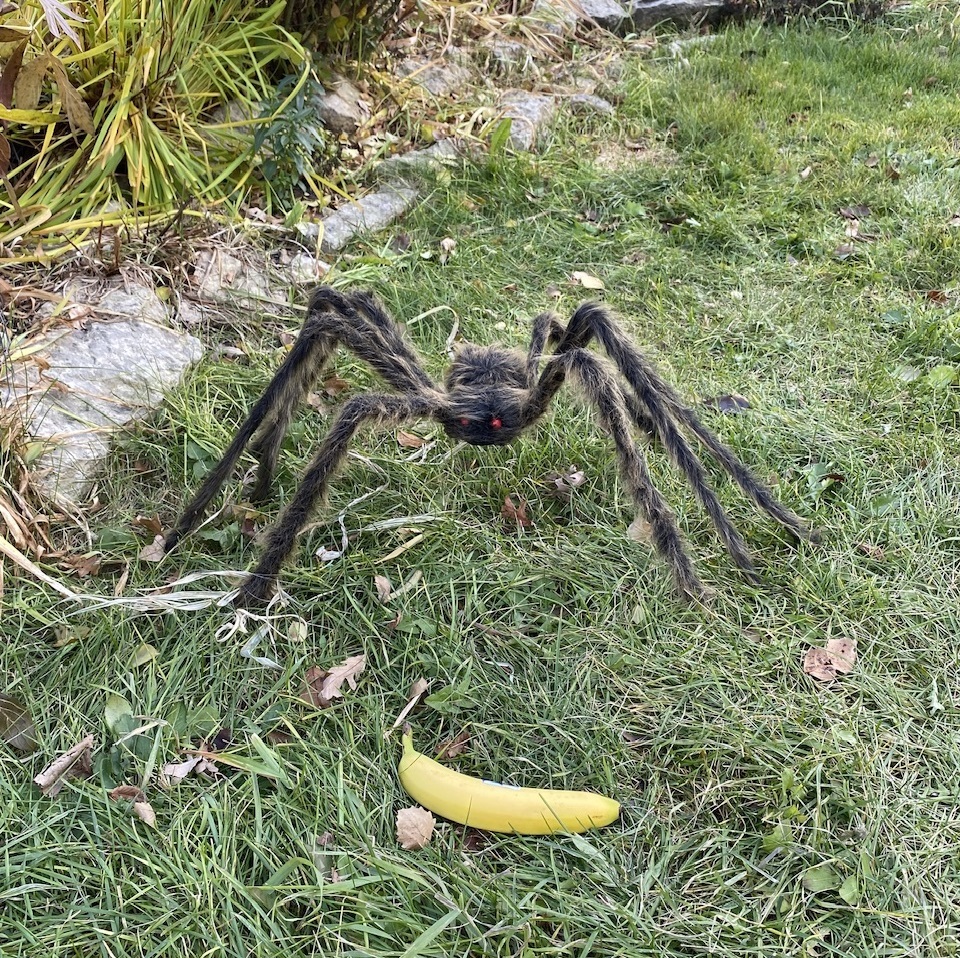

I've tried for years (recent background) to make a Halloween prank/trap,
usually spider, but couldn't get it right until now. There is a spider
(Spirit Halloween spider) on the grass with a banana in front of it. When a kid grabs the banana, the spider lurches forward.
"String" here means invisible(ish) string, specifically ten-pound fishing line. There is the power string, jerking the spider forward (even though the string goes mostly backwards). The second string is the trigger string. There is also a miniscule loop of string between the trigger bar and the coat hanger anchoring it to the ground.
There are three U-shaped sections of coat hanger used to anchor things to the ground. One anchors the elastics, one is for the trigger and the third is where the string loops back and attaches to the spider.

The elastic yanks back, but the spider moves forward. This shows how. We use invisible string, but it is illustrated by the dog leash. This is the power string.
The spider is going forward, but also down. The string is attached to the spider not at the front, but in the middle between the two body sections. Just tie the string around.
The power comes from three elastic bands chained together. Elastic bands are what most people call rubber bands, but that's a topic for another day. I happened to get good, muscular ones from Michaels.
I had fancy plans to twist them so that there would be a persistent pull, but there was no need. The spider is going to be yanked, oh, a dozen inches.
The elastics are some distance behind the spider.
The plan was to camouflage the elastics with spider web, but there was no need for that.
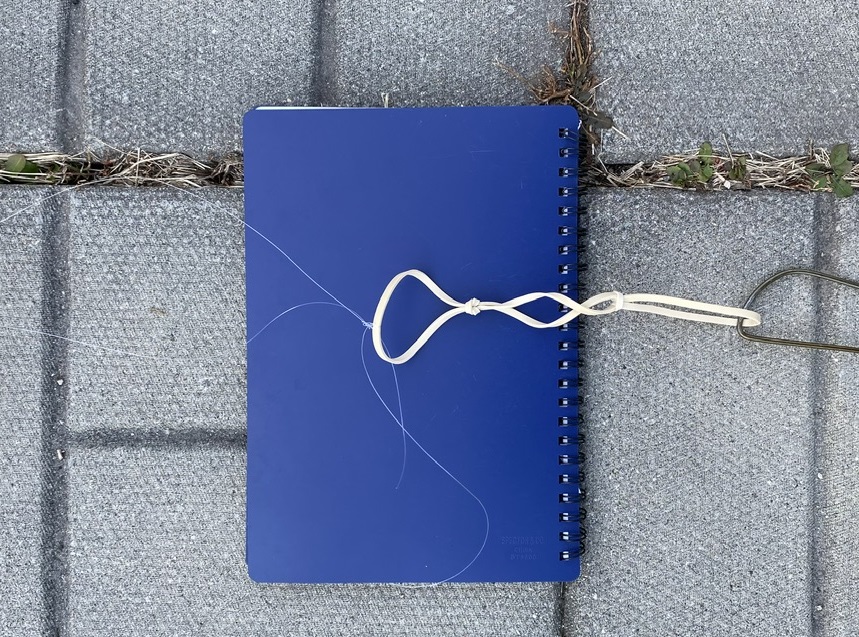
What I want you to get from this is there are two strings attached to the elastics, the power string and the trigger string.
You want the spider to move enough to rattle people, but not far enough that the artificiality becomes obvious.
Get a mousetrap. Break it up so you just have the flapping bar for leverage, and throw out the rest. You will rest a banana on it as bait. The nice thing about this is bait and string don't touch each other.
A U of coat hanger jammed in the ground, the flopping mousetrap bar by itself,
linked by a bit of invisible string, held down by a banana.

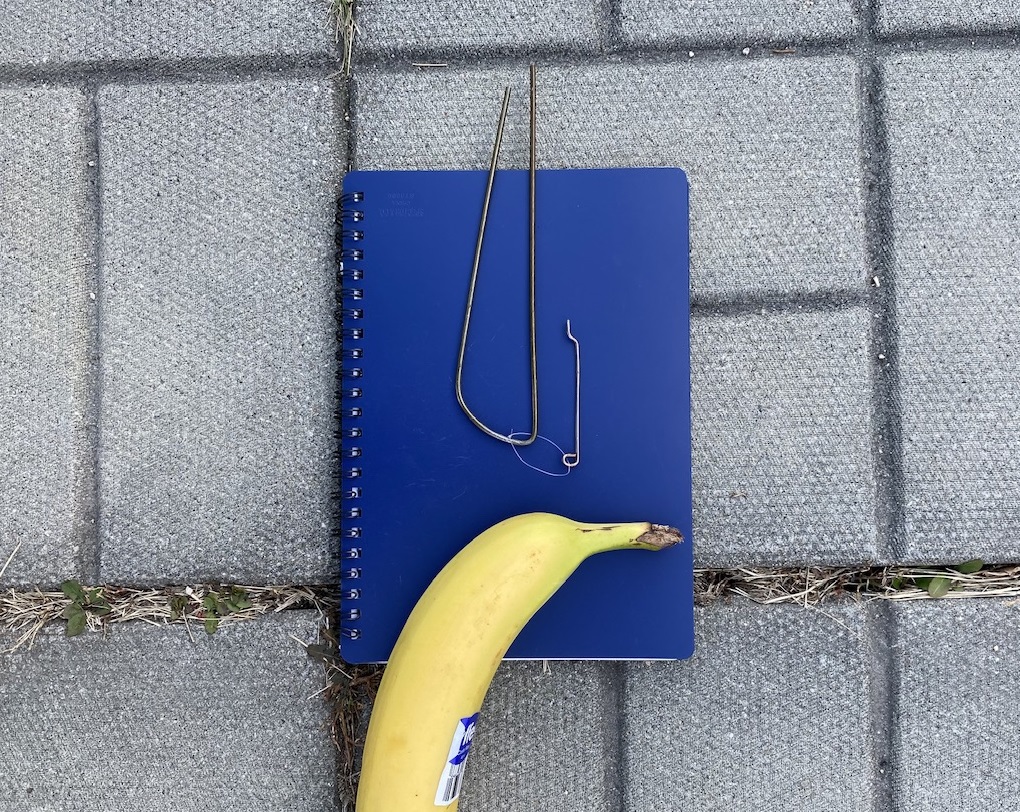
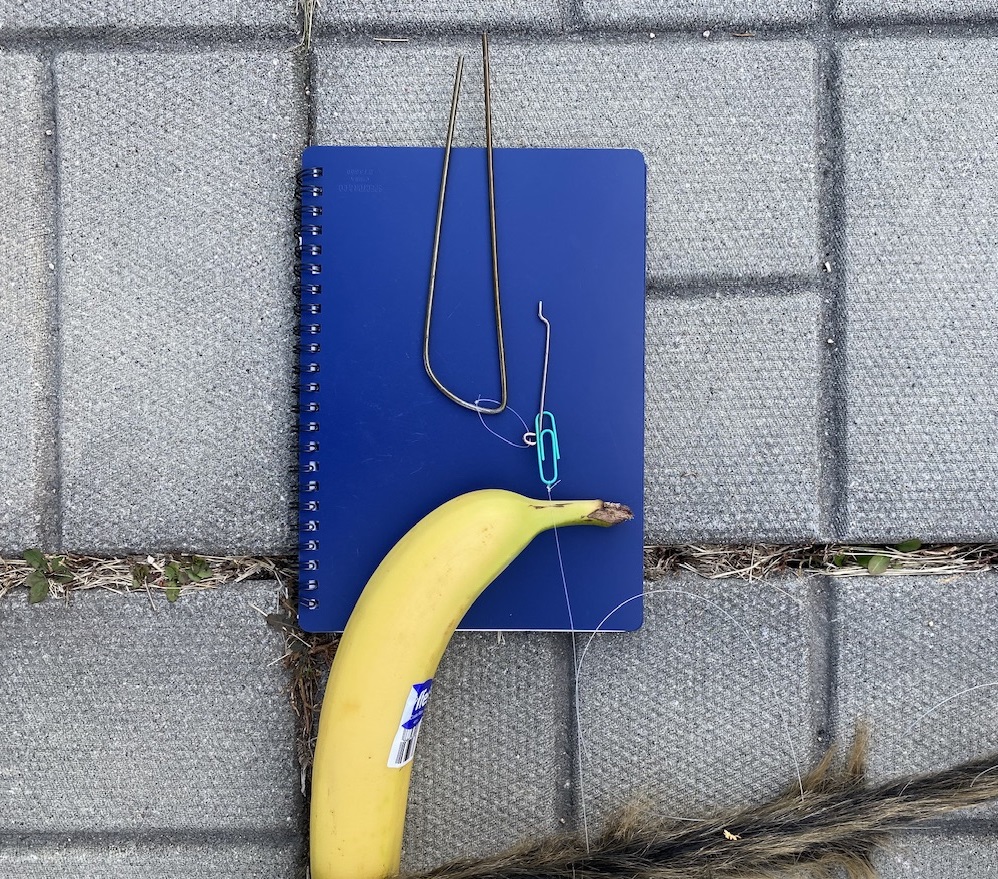
The string with the paper clip is the trigger string. One advantage of the paper clip is it's easier to find in the dark.
The spider is more in the shadow on the lawn, showing some leg in the light. I wouldn't go to that block, never mind the house. At least it's not alive.
The invisibility of the mechanism helps. Also it is silent, no electric motor sound or squawking. Actually there is a bit of a thiiw! sound as the paper clip zips through the grass.
Even if it doesn't scare people, there is still the magic trick aspect of it.
You might get a touch of walking as the legs negotiate their way through the grass.

I made a big sign saying "BEWARE OF SPIDER" and placed it on a chair. I was aiming for a medium-size sign on a stick.
Once all the mechanical and sensory challenges were solved, the challenge became social. So you've got kids showing up at the door, doing the protocol, with bags open expecting candy. The adults are more distant out there, closer to the spider. What exactly am I supposed to do? And the kids are yay high, so the spider might be too scary for them.
The banana and spider are thematically odd, but that was not an issue.
So this was a success. But what exactly were the results? I don't want to oversell it. I gave it an early try in front of my sister. It blipped pathetically forward. For whatever combination of reasons, including lighting, this got no reaction from her. During early trick or treating someone tried it. "I have to admit, it kind of got me." And that was the adult. It got a couple of squeals. I would prime things by emphasizing "Just be careful." There were a couple of cases where girls crawled hesitantly toward it. One girl came back to say thank you.
Some people effectively ignored me when I mumbled something about spiders.

String and metal are not in this picture. This would actually look different in the low light of hallowed evening, partly in the shadow of bush.
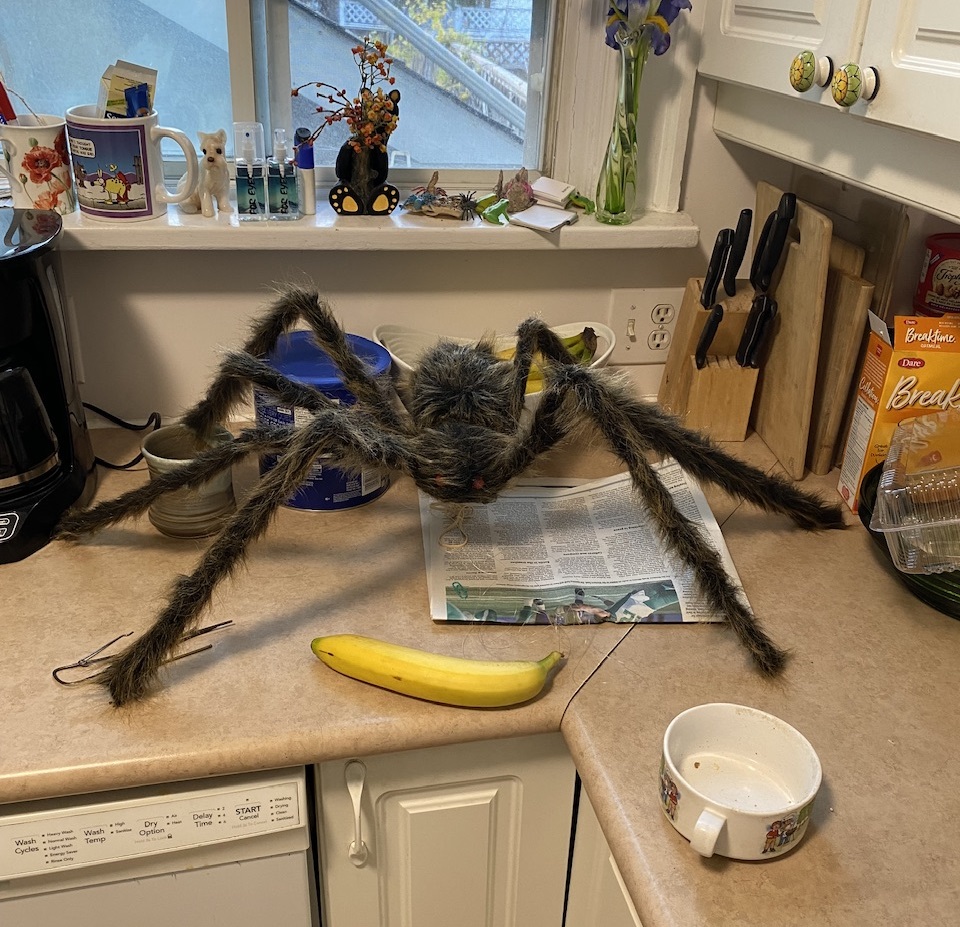
Don't touch my banana.
So you have all the materials prepared and a plan. But how would you fuss with fine-tuning the lengths of things? In the cold, possibly dark, working with invisible string?
The first thing to do is tie the power string to the middle of the spider, then loop it around a U and hammer the U in the ground, a little ahead of the spider. Get the string far back and tie it to the elastics. Make it gently taught, then pull the elastics back (dragging the spider forward) another dozen inches. Then hammer a U to anchor the elastics.
Now tie the trigger string to the elastics. Let it string out ahead of the spider, then yank it forward, twelve inches of tension, to where you want the bait to be. Note that this is also exactly where you will want the trigger bar to be. Attach a paper clip to the end of the trigger string.
Then anchor the trigger bar.
Doing this on Halloween got it to work without too much fuss. On the other hand, I later set it up at a friend's place and it was a frigid, dark puzzle, with the trigger too far ahead of the spider. This was surprising since I was using the same equipment, with established lengths. So .. should you pull that there, or adjust this here?
A solution to this is to make a diagram in advance (see below) and put some mental effort effort into figuring out what
adjustment will lead to what result.
If you really want to get your ducks in a row you could
| 1. Get someone to help you with the initial setup and tinkering. But it's going to be tedious for various reasons. |
| 2. Consider lighting for setting it up. Something with a flashlight. |
| 3. Make a diagram. |
But you don't have to do any of these.